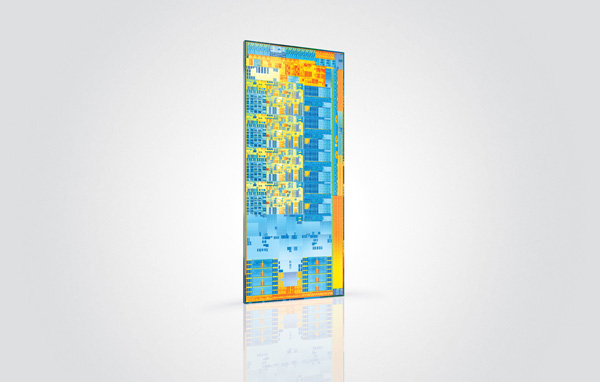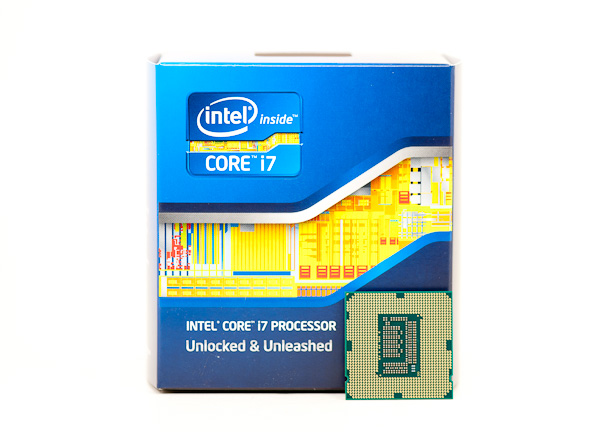The Intel Ivy Bridge (Core i7 3770K) Review
by Anand Lal Shimpi & Ryan Smith on April 23, 2012 12:03 PM EST- Posted in
- CPUs
- Intel
- Ivy Bridge
Final Words
Reviewing a tick in Intel's cadence is always difficult. After Conroe if we didn't see a 40% jump in a generation we were disappointed. And honestly, after Sandy Bridge I felt it would be quite similar. Luckily for Intel, Ivy Bridge is quite possibly the strongest tick it has ever put forth.
Ivy Bridge is unique in that it gives us the mild CPU bump but combines it with a very significant increase in GPU performance. The latter may not matter to many desktop users, but in the mobile space it's quite significant. Ultimately that's what gives Ivy Bridge it's appeal. If you're already on Intel's latest and greatest, you won't appreciate Ivy as an upgrade but you may appreciate for the role it plays in the industry—as the first 22nm CPU from Intel and as a bridge to Haswell. If you missed last year's upgrade, it'll be Ivy's performance and lower TDP that will win you over instead.
Intel has done its best to make this tick more interesting than most. Ivy Bridge is being used as the introduction vehicle to Intel's 22nm process. In turn you get a cooler running CPU than Sandy Bridge (on the order of 20—30W under load), but you do give up a couple hundred MHz on the overclocking side. While I had no issues getting my 3770K up to 4.6GHz on the stock cooler, Sandy Bridge will likely be the better overclocker for most.
With Ivy Bridge and its 7-series chipset we finally get USB 3.0 support. In another month or so we'll also get Thunderbolt support (although you'll have to hold off on buying a 7-series motherboard until then if you want it). This platform is turning out to be everything Sandy Bridge should have been.
Ivy's GPU performance is, once again, a step in the right direction. While Sandy Bridge could play modern games at the absolute lowest quality settings, at low resolutions, Ivy lets us play at medium quality settings in most games. You're still going to be limited to 1366 x 768 in many situations, but things will look significantly better.
The sub-$80 GPU market continues to be in danger as we're finally able to get not-horrible graphics with nearly every Intel CPU sold. Intel still has a long way to go however. The GPUs we're comparing to are lackluster at best. While it's admirable that Intel has pulled itself out of the graphics rut that it was stuck in for the past decade, more progress is needed. Ivy's die size alone tells us that Intel could have given us more this generation, and I'm disappointed that we didn't get it. At some point Intel is going to have to be more aggressive with spending silicon real estate if it really wants to be taken seriously as a GPU company.
Similarly disappointing for everyone who isn't Intel, it's been more than a year after Sandy Bridge's launch and none of the GPU vendors have been able to put forth a better solution than Quick Sync. If you're constantly transcoding movies to get them onto your smartphone or tablet, you need Ivy Bridge. In less than 7 minutes, and with no impact to CPU usage, I was able to transcode a complete 130 minute 1080p video to an iPad friendly format—that's over 15x real time.
While it's not enough to tempt existing Sandy Bridge owners, if you missed the upgrade last year then Ivy Bridge is solid ground to walk on. It's still the best performing client x86 architecture on the planet and a little to a lot better than its predecessor depending on how much you use the on-die GPU.
Additional Reading
Intel's Ivy Bridge Architecture Exposed
Mobile Ivy Bridge Review
Undervolting & Overclocking on Ivy Bridge
Intel's Ivy Bridge: An HTPC Perspective












173 Comments
View All Comments
dagamer34 - Monday, April 23, 2012 - link
I see them just killing off the 13" MacBook Pro entirely, and upgrading the SSD base size to 256GB. There's little reason for the Pro to live on anymore when the Air is far superior in everything except for CPU.gorash - Monday, April 23, 2012 - link
Really... the Air's screen is terrible. Plus Air is basically not user upgradeable.Breach1337 - Monday, April 23, 2012 - link
Yeah, I view mine as a consumable. And I love it.tipoo - Monday, April 23, 2012 - link
That would be a shame, even without the optical drive they could differentiate the 13" pro from the Air with the mentioned 35w quad core CPU, or a discreet GPU in all the space they saved from ditching the ODD, and have more space for battery to offset it.jaydee - Monday, April 23, 2012 - link
If I'm buying a system for onboard GPU gaming, I'm going AMD. If I'm buying a system for cpu performance with overclocking, I'm buying Sandy Bridge. I'm not sure what the point of this launch is.A5 - Monday, April 23, 2012 - link
Notebooks/ultrabooks and debugging the new process node.8steve8 - Monday, April 23, 2012 - link
I've seen so many negative comments like this about Ivy Bridge all over the web... so I'll respond to them all here:I'd rather have higher energy efficiency and stability (and less noise), which comes with running at stock voltage/clock speeds. I am not alone there... Plus with turbo boost, why bother OCing, when it has the thermal headroom, it boosts the clock...
If you think that you can find a significantly better sweat spot of performance, power consumption, and reliability/lifespan of the average high-end (K) CPU from intel, then I have to call BS on that. If you agree that intel knows their cpus better than you, but are purposely under-clocking them (the highest clocked models), then I would ask why.
I may say that given significantly more exotic/larger/louder coolers, maybe you can dissipate more heat than the processors were designed to dissipate, and you have some headroom to raise the voltage, which may yield higher stable frequencies, but keep in mind power is roughly proportional to voltage^2, so energy efficiency goes out the window real fast...
I'm not saying no one should play around with their CPUs, have fun... but to say ivy bridge is pointless just because you can't over-volt/over-clock it to the same extent as sandy bridge is foolish when it's clearly a significant step forward, and the best solution for the vast majority x86 PCs.
For those of us who want an energy efficient, high performance computer, some variant of ivy bridge will be the best option, probably until haswell/2013.
Thanks intel, and thanks Anand for the review.
jaydee - Monday, April 23, 2012 - link
But it's really not that much more efficient. In fact at idle, the difference is negligible by all benchmarks I've seen, which for most users is the most important area. At full power, a difference of 25 watts is practically nothing given how much time most cpu's are spent at that load. It really shouldn't affect power supply sizing either. I'm just talking about desktop usage here, we don't really have a good look at the notebook chips yet.I'm not sure what Intel thinks it's pulling by calling this "tick+" instead of a regular "tick". I don't see anything here that's really that appealing. If helps Intel "debug the process node for 22nm", that's great for Intel, but it doesn't sway me as a consumer to buy one.
JarredWalton - Monday, April 23, 2012 - link
Idle power quickly hits a limit based on everything else in the system. It's hardly surprising that the highly efficient Sandy Bridge does just as well at idle as Ivy Bridge. Power gating allows Intel to basically shut down everything that's not being used, and the result is that low loads have pretty much hit their limits. What's impressive is the big drop in power use under heavier loads.As for the "tick+", it's all in the GPU. They went from DX10 12EU in SNB to DX11 and 16EU in IVB. As a percentage of total die size, the GPU in IVB is much larger than the one in SNB. But as Anand notes, we still would have liked more (e.g. a 24 EU GT3 would have been awesome for IGP performance).
owan - Monday, April 23, 2012 - link
Marginal improvement over Sandy Bridge that can be compensated for by SB's significantly better overclocking ability. Why so much praise for the IGP when 95% of desktop users don't care AND its still vastly inferior to Llano? With so much focus on mobile I'm not even sure why they bothered releasing a high-end desktop SKU